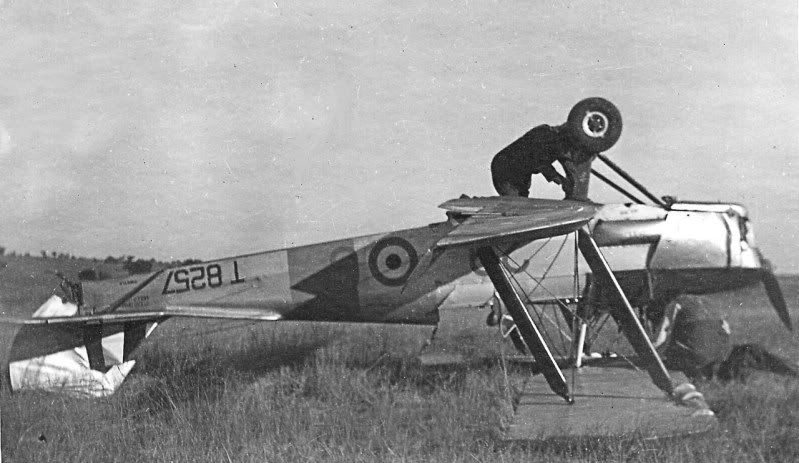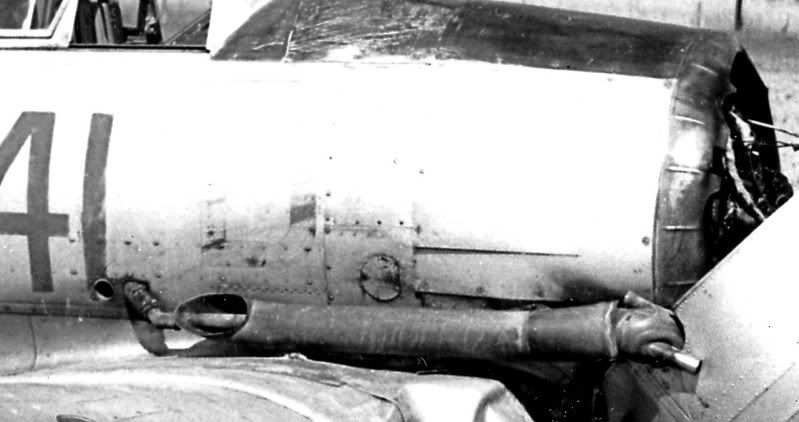RAF Funerals in an Earlier Era
Join Date: Jul 2004
Location: Longton, Lancs, UK
Age: 80
Posts: 1,527
Likes: 0
Received 1 Like
on
1 Post
Why would anyone wear KD or 'combats' in a New York radio station
KDs days are numbered, partly because it is no longer demonstrably 'air force' and the shorts look faintly ridiculous this day and age,
Pity they are disappearing from the armed forces - how will guys now be expected to "get their knees brown"?
When I did foreign staff college, I did wear shorts from time to time and an Italian colleague, either shocked or impressed, called them 'corto perverso'.
http://cmkamp.be/bertorelli.jpg
Last edited by Tankertrashnav; 19th Jun 2011 at 21:03.
Thread Starter
Not all accidents were as catastrophic at those described in my original post #1 (above).
Standard procedure for Harvard's that suffered engine failure was to make a "wheels-up" forced landing in the 'Bundu'. This was a sensible ploy and on most occasions despite a 'bent' aircraft the pilot(s) walked away unscathed and lived to fly another day, as seen below.

Unlike the Harvards that made successful wheels-up forced landings. Tiger Moths doing the same suffered the indignity of turning upside down when the main wheels caught on the the brush or uneven ground.

Standard procedure for Harvard's that suffered engine failure was to make a "wheels-up" forced landing in the 'Bundu'. This was a sensible ploy and on most occasions despite a 'bent' aircraft the pilot(s) walked away unscathed and lived to fly another day, as seen below.

Unlike the Harvards that made successful wheels-up forced landings. Tiger Moths doing the same suffered the indignity of turning upside down when the main wheels caught on the the brush or uneven ground.

I see that the Harvard that bellied in had a silencer fitted in common with the RRAF Harvards. The ones down at Heany did not have those so the wildlife was a bit more active.
That seems to have more logic. Flew once in a Harvard, at Boscombe Down as a pleasant (only "pleasant" - no MAGIC ??) interlude in conducting the Command Accountant's Inspection. Wholly unforgettable.
I won't argue but I thought the heat exchanger has a pipe thingy sticking out of the front. That one, in common with lots of others, hasn't. New Zealand is a damned site colder than Rhodesia and they had nothing.


Join Date: May 2010
Location: Philippines
Age: 81
Posts: 147
Likes: 0
Received 0 Likes
on
0 Posts
I was serving my first tour at Akrotiri when the sad and fatal aborted take off of a 10 squadron Victor occurred during 1962 and was one of the group called to try to control fire in the scrub/brush around the area (in the final event not really needed). I was also detailed as a coffin bearer for the internment at the British Military Cemetery at Dhekelia some days later. If I remember, our dress was the No 6 Uniform of the time (KD tunic with shirt and tie and long trousers with black shoes and SD Hat) though I do not remember having a black arm band. The occasion was conducted with the decorum one would expect and was a fitting laying to rest; the affair has had a lasting impression on me. Better though, I think, the present day arrangement of returning deceased to the UK.
Thread Starter
The 'silencer' is actually a heat exchanger for cockpit warmth and carb de-ice
Control of cockpit heat was by a simple butterfly shutter in the tube down by the right foot.
Rhodesian winter evenings could be pretty cold. With an airfield height of 4,680 ft and once in the cruise at 3-4,000 ft above ground level, most pilots welcomed the comfort given by the heater.

Thread Starter
though I do not remember having a black arm band.
Another picture from my album (not terribly good I'm afraid as it's a copy of a copy), shows the passing-out parade of number 8 Course at RAF Thornhill, probably around early 1953 with the whole course wearing black armbands.
The reviewing officer was A. Cdre 'Smokey' Bearne, AOC Rhodesian Air Training Group.

I surrender! A Royal Rhodesian Air Force pilot told me it was a silencer to avoid frightening wild animals when they had one on show at Kumalo; then Bulawayo Airport. I know its cold in winter; I had to bivuac in the Matopos Hills in winter when I was a squaddie doing my National Service.
What am I waffling about! The carb heat supply was taken from an exhaust collector ring shroud if I (now) remember correctly.
Interesting photos, warmtoast.
Interesting photos, warmtoast.
A Royal Rhodesian Air Force pilot told me
I also wonder with such a Heath Robinson contraption stuck on the side how many Harvards were lost because their pilots were suffering from carbon monoxide poisoning.
Warmtoast:
Can I suggest that the black armbands being worn in your photograph above were probably because the pikkie was taken early in 1952 or March 1953. In either case they would have been part of the court mourning for King George VI (Feb 52) or his mother Queen Mary (Mar 53).
The interesting part of the picture is that RAF officers are carrying rifles. Had it been their graduation as officer cadets, this would have been expected but as the photo seems to show the passing out of a flying course, pretty unusual I'd have thought.
Old Duffer
Can I suggest that the black armbands being worn in your photograph above were probably because the pikkie was taken early in 1952 or March 1953. In either case they would have been part of the court mourning for King George VI (Feb 52) or his mother Queen Mary (Mar 53).
The interesting part of the picture is that RAF officers are carrying rifles. Had it been their graduation as officer cadets, this would have been expected but as the photo seems to show the passing out of a flying course, pretty unusual I'd have thought.
Old Duffer
The situation regarding Rhodesian Air Force personnel was still as you recall in 1964/65. During that time, I went through ITS at South Cerney and then Nos 2 and 1 Nav Schools with a chap who remained an Officer Cadet throughout. UDI in November 65 took him home, with barely a month to go to graduation.
The gentlemen in the photograph are not officer cadets. No white bands round the cap and what looks like p/o braid visible on several shoulder boards.
I also think most of these men are probably RAF (no Rhodesia shoulder flashes).
These chaps are probably 4 FTS and the AOC commands the Rhodesia Air Training Group which was an RAF organisation.
Old Duffer
I also think most of these men are probably RAF (no Rhodesia shoulder flashes).
These chaps are probably 4 FTS and the AOC commands the Rhodesia Air Training Group which was an RAF organisation.
Old Duffer
Thread Starter
Old-Duffer
Re-checking my album and papers the photo is of RAF Thornhill No. 6 Pilots' Course who passed out on 6th May 1952 and the photo was published in the June 1952 issue of 'BUKA' the RAF Thornhill station magazine. See below:


When King George VI died in February 1952 the RAF flag outside Station HQ at RAF Thornhill was flown at half-mast, and as I mentioned in my post#1 above I photographed many things whilst abroad, including the flag at half-mast as shown below!

Re-checking my album and papers the photo is of RAF Thornhill No. 6 Pilots' Course who passed out on 6th May 1952 and the photo was published in the June 1952 issue of 'BUKA' the RAF Thornhill station magazine. See below:


When King George VI died in February 1952 the RAF flag outside Station HQ at RAF Thornhill was flown at half-mast, and as I mentioned in my post#1 above I photographed many things whilst abroad, including the flag at half-mast as shown below!





 )
)